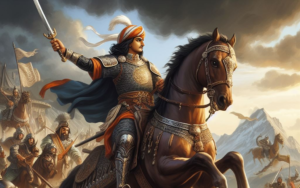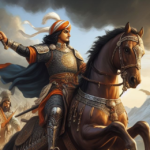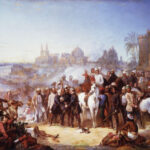The Muslim Invasion of India: A Historical Perspective
The Muslim invasions of India mark a significant period in the subcontinent’s history, transforming its social, cultural, and political landscapes. Spanning several centuries, these invasions were led by various dynasties and leaders, each leaving an indelible mark on Indian history. This blog post delves into the major invasions, key battles, and the contributions of notable scholars during this era.
Early Invasions: The Arab Conquests
Muhammad bin Qasim (711-715 CE)
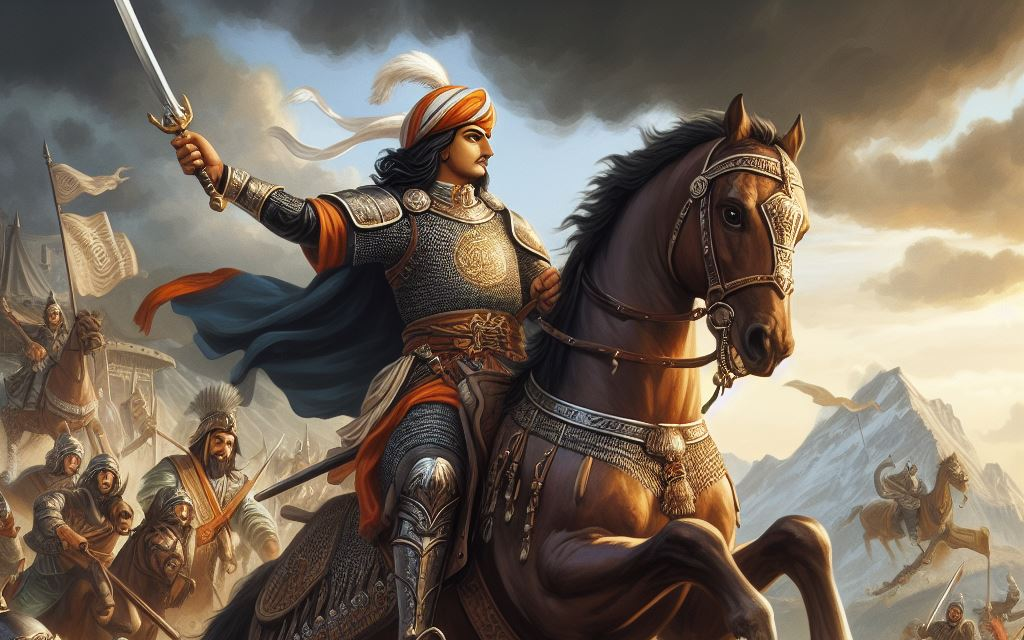
Muhammad bin Qasim’s conquest of Sindh in 711 CE is often considered the first significant Muslim invasion of India. He was a general of the Umayyad Caliphate, and his invasion laid the groundwork for future Muslim incursions into the Indian subcontinent. Earlier in 712 AD, a campaign was under taken to India under the leadership of Ubaidullah but he was defeated and killed in the encounter. The second unsuccessful campaign was headed by Budail, but he was also unsuccessful. The conquest of Sindh is described in a persian text “Chachanama”
- Battle of Raor (712 CE): This decisive battle led to the defeat of Raja Dahir, the ruler of Sindh, and established Muslim rule in the region.
- Impact: The Arab rule in Sindh introduced Islamic culture and governance, which had a lasting influence on the region.
The Ghaznavid Empire
Alpatgin was the founder of Ghaznavi Empire.
Mahmud of Ghazni (971-1030 CE)
Mahmud of Ghazni, the most notable ruler of the Ghaznavid Empire, led numerous raids into India between 1000 and 1027 CE. His invasions were primarily motivated by wealth but also aimed to spread Islam.
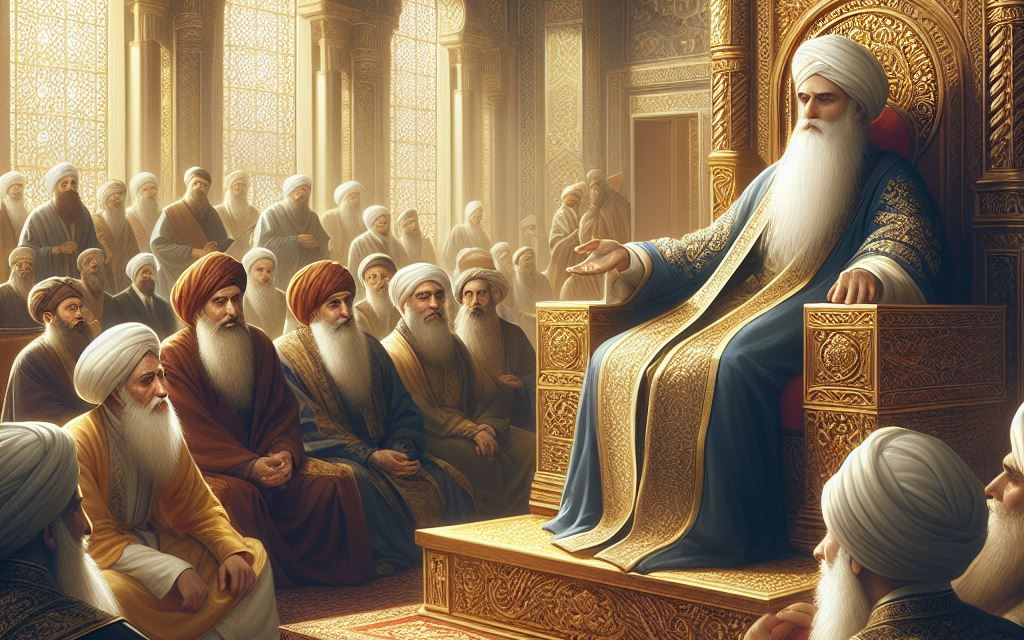
- Battle of Peshawar (1001 CE): Mahmud defeated Jayapala, the Hindu Shahi king, establishing a foothold in the northwestern part of India.
- Destruction of Somnath Temple (1025 CE): Mahmud Ghaznavi plundered Somnath Temple during the reign of Bhimdev I (1022-63). This raid is one of Mahmud’s most infamous, where he plundered the temple and carried away immense wealth.
- Mahmud Ghaznavi invaded Chandelas in 1019-20 AD. The ruler of Chandela dynasty was Vidyadhar who was the most powerful king of the dynasty. He was the only Hindu ruler who had successfully resisted Muslim invasions.
- Between 999-1027 AD Mahmud Ghazni (Ghaznavi) attacked India for 17 times, but the motive of these invasions was not to establish a stable Muslim rule in India but only to plunder the material assets. Baghdad’s Caliphate AlQadir-Billah titled Mahmud Ghaznavi as ‘Yamin-ud-Daula’and ‘Amin-al-Millah’.
- Mahmud Ghaznavi was learned and gentle. He respected scholars and artists. He gathered famous scholars at that time in Ghazni.
- Utbi was his court historian. He wrote texts like ‘Kitab-ul-Yamini’ and ‘Tarikh-i-Yamini’.
- Other prominent members of his court were Alberuni, Baghaqi writer of Tarikh-i-Subuktigin, Persian poet Uzari, Tusi and Unsuri, Asfadi and Farrukhi.
- The author of Shahnama is Firdausi. He was a famous court poet of Mahmud Ghaznavi. He earned the titled of ‘Homes of East’.
- Ferishta (1560-1620 A.D.) wrote books like Tarikh-i-Ferishta or Gulshan-e- Ibrahimi. His full name was Muhammad Qasim Hindu Shah. His book ‘Tarikh-i-Ferishta’ is dedicated to the ruler of Bijapur Ibrahim Adil Shah.
- Alberuni came to India with Mahmud Ghazanavi in 11th century. From his book ‘Kitab-ul-hind’ we come to know about the social and cultural conditions of contemporary India. Alberuni was the first Muslim who study Puranas . He came to India with Mahmud Ghaznavi. Alberuni was not only the historian, his knowledge and interest included Astronomy, Geography, logic, medicine, mathematics, religion and theology. He studied Sanskrit including many literary works of Brahmagupta, Balabhadra and Varahmihira are outlined specially. Alberuni wrote ‘Tahqiq-i-hind’ in the Arabic language. Sachau translated this text from Arabic into English language. Rajnikant Sharma translated it in Hindi.
- Mahmud Ghazanavi introduced silver coins with Sanskrit legend. The two sides of the coin were marked with the legend in two different languages. The legend on the upper side was inscribed in the Arabic language, and the other side was inscribed in the Sanskrit language (Devnagari Script).On the middle part of the coin was written in Sanskrit language – “Avyaktmekam Muhammad Avatar Nurupati Mahmud”.
Muhammad Ghori’s Invasions:
- First Invasion (1175 AD): Muhammad Ghori invaded India.
- Defeat in Gujarat (1178 AD):
- Muhammad Ghori was defeated near Mount Abu by Mularaja-II or Bhima-II, led by his mother, Naayika Devi.
- This was Ghori’s first defeat in India.
Battles of Tarain:
- First Battle of Tarain (1191 AD):
- Fought between Prithviraj Chauhan and Muhammad Ghori.
- Prithviraj Chauhan emerged victorious.
- Second Battle of Tarain (1192 AD):
- Muhammad Ghori defeated Prithviraj Chauhan.
- This battle established Muslim power in India.
- Prithviraj Chauhan was captured near Sursati (modern Sirsa, Haryana) while trying to escape.
- According to Hasan Nizami, Prithviraj accepted Ghori’s rule but was executed when he tried to revolt.
Battle of Chandawar (1194 AD):
- Muhammad Ghori defeated King Jaychand of Kannauj.
- Chandawar is located in present-day Firozabad district near the Yamuna River.
Coinage:
- Ghori issued coins with the image of Goddess Laxmi on one side and the Kalma in Arabic on the other.
Iqta System:
- Introduced by Ghori in Northern India after his victories.
Qutb Al-Din Aybak:
- Appointed as incharge of Ghori’s Indian territories in 1192 AD.
- Played a crucial role in the second battle of Tarain.
- Made the administrator of Kuhram and Samana.
- Controlled Northern India on Ghori’s behalf until 1206 AD.
- Expanded Turkish power in Northern India.
Conquest of Bihar and Bengal:
- Ikhtiyar-ud-din Muhammad-Bin Bakhtiyar Khalji:
- A slave of Muhammad Ghori, he conquered Bihar and Bengal.
- Bihar (1193-1202): Conquered the capital Odantapuri and destroyed Nalanda and Vikramshila.
- Bengal (1198-1203): Invaded Bengal, where the ruler Lakshmana Sena fled without fighting.
- Khalji’s Turkish army plundered Nadia, the capital city.
- Lakshmana Sena took refuge in South Bengal and ruled there for some time.
- Khalji did not attempt to conquer all of Bengal and made Lakhnauti his capital.
Impact on Society:
- According to Professor Habib, the Turkish victory in the Northwestern provinces led to significant urban and rural changes, known as the ‘Urban Revolution’ and ‘Rural Revolution.’
Conclusion
The Muslim invasions of India, spanning from the early Arab conquests to the establishment of the Mughal Empire, were a transformative period in Indian history. These invasions brought about significant changes in the political, cultural, and social fabric of the subcontinent. Key battles such as the First and Second Battles of Tarain, the Battle of Chandawar, and the First Battle of Panipat were instrumental in shaping the course of Indian history. Additionally, scholars like Al-Biruni, Amir Khusrau, and Abul Fazl made enduring contributions to various fields, enriching India’s cultural and intellectual heritage.
Understanding this complex period is crucial for grasping the intricate tapestry of India’s history, marked by the confluence of diverse cultures and ideas. The legacy of the Muslim invasions is evident in India’s architecture, language, and religious practices, reflecting a rich and multifaceted historical narrative.
